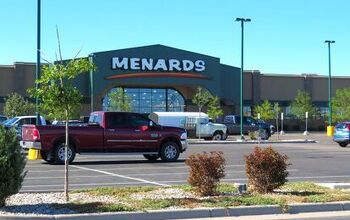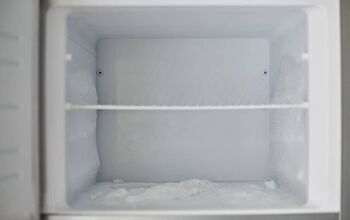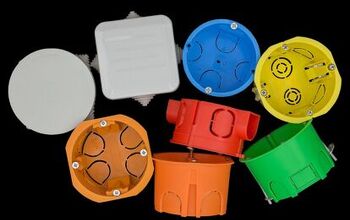Five Common Greenhouse Pests And How To Get Rid Of Them

A greenhouses is a great luxury, but that doesn’t mean running one is always easy by any means. Many people worry about disease, fungi, and pests infiltrating their greenhouse and wreaking havoc. That’s why we put together a list of the most common greenhouse pests and how to get rid of them.
Spider mites and aphids are among the most common, problematic pests that you may find in your greenhouse. Fungus gnats, whiteflies, and thrips are also drawn to greenhouses due to the moisture, heat, and organic matter. It’s important to regularly inspect your plants for signs of pests, like leaf discoloration and egg sacs.
You can get rid of many of the most common greenhouse pests if you spray them with a mixture of dish soap and water. However, it’s worth looking into systemic pesticides if you simply cannot keep your pest problem under control. Follow along as we explore five common greenhouse pests and highlight how to get rid of them.
Is A Greenhouse Immune To Pests?
Greenhouses aren’t immune to pests, but they typically have less pest diversity than traditional gardens. Some people think that pests cannot get into a greenhouse because of its layout. However, a greenhouse is far less airtight than it looks, so pests can still get in.
You must also consider that pests can latch onto plants at a plant nursery, and you may unknowingly bring them home. The same thing can happen with potting soil and other garden supplies. Because greenhouses don’t have as many bugs, they don't have many bugs and animals that prey on pests.
This can let pests run more rampant than they would in your garden. However, the lower pest diversity can still make a big difference compared to your standard outdoor garden. It’s important to treat your greenhouse for pests to prevent major problems.
What Are The Most Common Pests In A Greenhouse?
1. Spider Mites
Spider mites are any gardener’s worst nightmare, and it’s with good reason. They can quickly spread among all the plants in your greenhouse if you don’t address the problem quickly. That’s especially true in a greenhouse with lots of gaps, cracks, and openings.
The wind can carry spider mites into a greenhouse, where they will latch onto the plants. Similarly, they can latch onto your clothes and even plants that you buy and put in your greenhouse. Luckily, you can get rid of spider mites with a mixture of mild dish soap and water or commercial miticides.
Some people even remove infested plants and soak them in a tub of water to drown the spider mites. However, that can harm your plants if you aren’t careful, so it’s better to spray them with soapy water. More importantly, it’s essential to inspect your plants before putting them in your greenhouse.
2. Aphids
Aphids are right up there with spider mites as being among the worst pests to find in your greenhouse. They get into a greenhouse in the same ways as spider mites, and they’re just as problematic. For example, aphids can quickly weaken your plants, as they feed on sap.
You will know your greenhouse has an aphid problem if you find yellowed leaves and a sugary substance on your plants. Aphids are easy to spot, as they often stick together in tight clusters on leaves. They’re also much bigger than spider mites, even if they’re still small.
Aphids can also make your plants more vulnerable to diseases, fungi, and other pests. You can kill aphids with soapy water, neem oil, and beneficial insects, such as ladybugs and lacewings. Regularly prune your plants and keep your greenhouse tidy to deter aphids.
3. Fungus Gnats
Greenhouses are typically warm, humid, and full of organic matter, such as mulch, compost, and plants. Each of these things can attract fungus gnats, which can wreak havoc on your greenhouse. Fungus gnats are quite annoying, but they’re much less destructive than aphids and spider mites.
That said, fungus gnats can cause root damage because the larvae often feed on roots. You can help reduce the risk of fungus gnats in your greenhouse if you try your best to reduce the moisture level. Avoid overwatering your plants and make sure there isn’t any standing water on the ground and in the pots.
You must also routinely check for fungus gnat eggs and remove them as needed. Some people even introduce predatory mites, which can quickly kill the larvae for you.
4. Thrips
Spider mites, aphids, and fungus gnats may be hard to detect, but you can easily spot thrips in your greenhouse. Thrips are bigger than some other greenhouse pests, and they can cause problems if you don’t catch them early. You can tell you have a thrip problem even if you don’t see them, as thrips leave many signs behind, like leaf discoloration and black excrement flecks.
Thrips punch tiny holes in leaves that mimic a stippling pattern you may see on an old painting. Carefully shake your plants and tap the leaves if you suspect you may have thrips in your greenhouse. That should be more than enough to knock them loose, but that’s not enough to get rid of them.
You can get rid of them for good if you remove the eggs, lay reflective mulch, and treat your plants with neem oil. Some people use commercial insecticides, but that can be risky. In many ways, systemic pesticides are more effective than contact pesticides.
5. Whiteflies
Does your greenhouse have a lot of plants with light leaves? If so, you may find some whiteflies in your greenhouse, as they’re drawn to plants with yellow and white leaves. Whiteflies also love humid, warm environments, so they’re naturally drawn to greenhouses.
You may find whiteflies in your greenhouse during hot spells when they want to get away from the heat. Luckily, getting rid of whiteflies is easier than getting rid of spider mites and aphids. For example, you can set up a bunch of sticky traps throughout your greenhouse to catch them.
Use white and yellow sticky traps, as the light colors will attract whiteflies and quickly control the problem. Some people even vacuum whitefly eggs with handheld vacuums, but standard manual removal is just as effective.
How To Keep Pests Out Of Your Greenhouse
The best way to keep pests out of your greenhouse is to seal all the cracks and gaps. It’s also important to put screens over the vents and other openings, or else pests may sneak in. The key to greenhouse pest control is to regularly inspect your plants for signs of them, such as discoloration and holes.
You must also inspect new plants before you buy them from plant nurseries, so you don’t accidentally bring pests home. Carefully space your plants apart to discourage pests from hiding in your greenhouse, as they love dense garden spaces. You should also introduce plants that repel pests, such as marigolds, sunflowers, lemongrass, and rosemary.
Natural repellents like garlic, mint oil, neem oil, and eucalyptus are also quite effective. Disease control is equally important, as diseases can spread among your plants and devastate them. Quarantine new plants before you place them beside your healthy plants to make sure they don’t have diseases.
Summing It Up
Common pests like whiteflies, thrips, and fungus gnats can infiltrate any greenhouse. They flock to greenhouses because of the plants, soil, moisture, and heat. However, the most problematic pests you may find in your greenhouse are spider mites and aphids. Invest in a systemic pesticide or hire a pest control service if you struggle to get rid of the pests.
Related Guides:

Nick Durante is a professional writer with a primary focus on home improvement. When he is not writing about home improvement or taking on projects around the house, he likes to read and create art. He is always looking towards the newest trends in home improvement.
More by Nick Durante



























